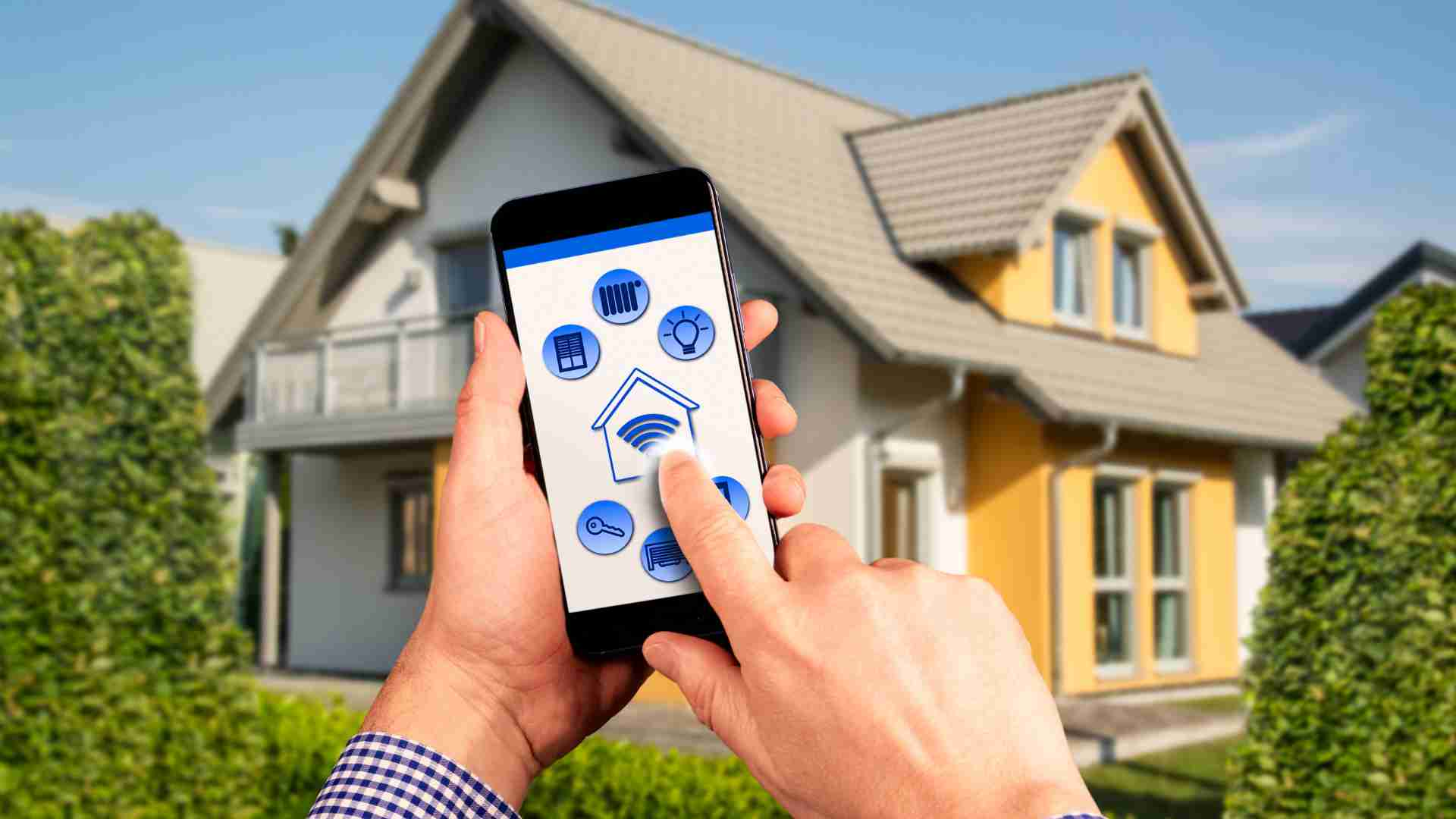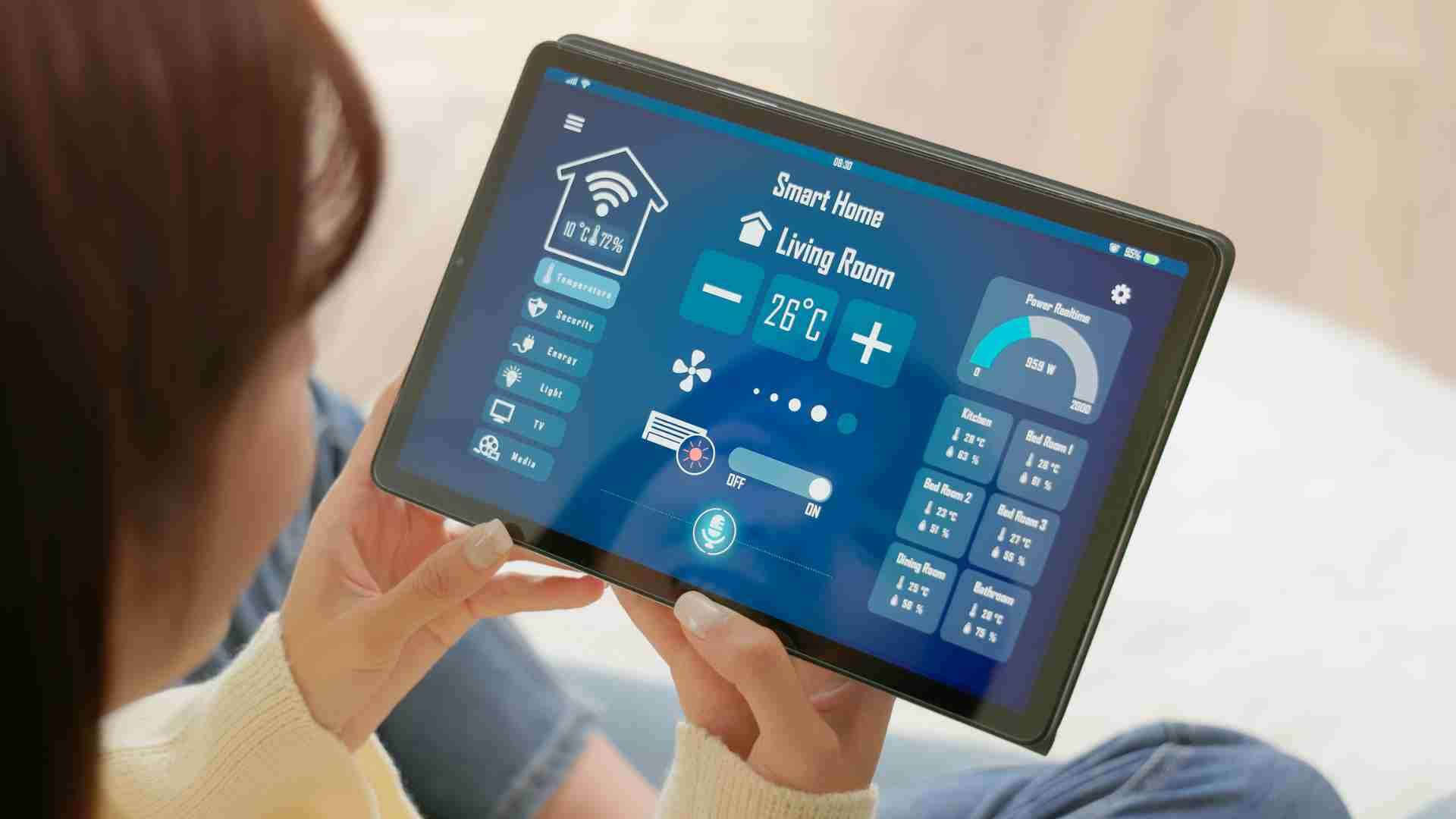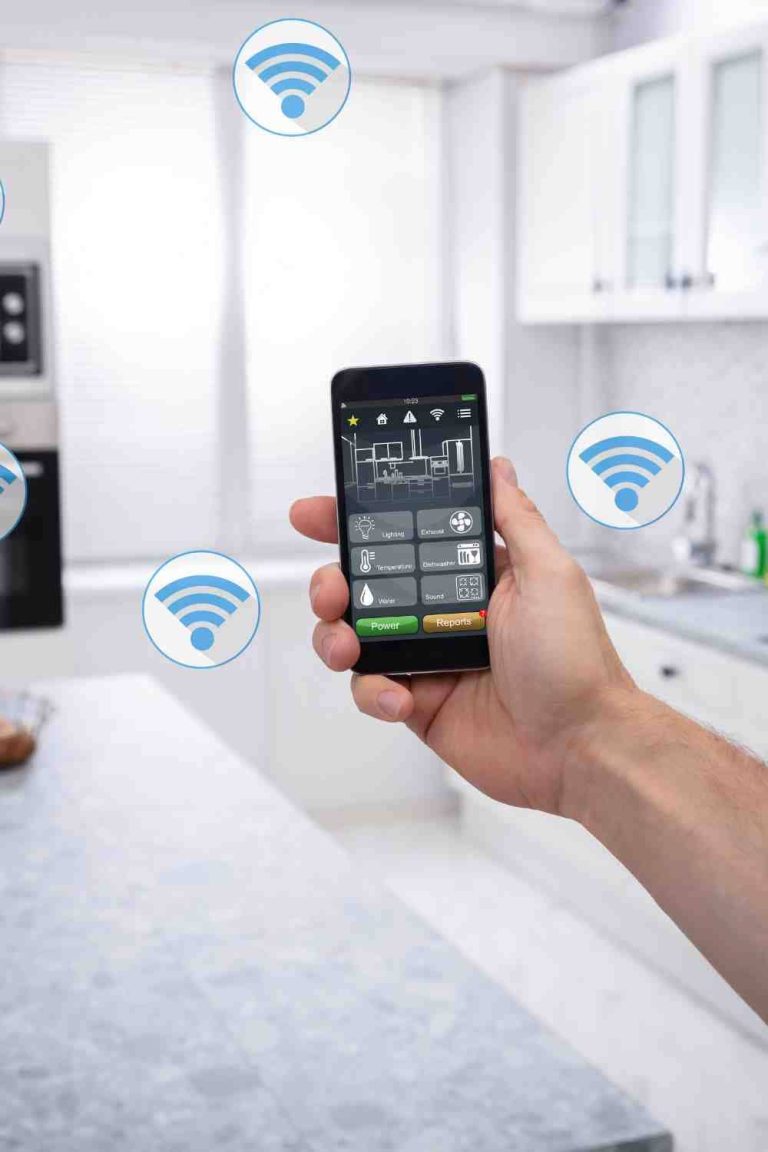Are Smart Home Devices Secure? Unveiling the Truth!
Smart home devices can be secure, but their safety greatly depends on proper setup and ongoing maintenance. Strong passwords, regular updates, and network security are crucial for protection.
Smart home technology brings convenience to daily life, revolutionizing how we interact with our living spaces. Yet, the rising adoption of connected devices casts a spotlight on their security vulnerabilities. Manufacturers strive to enhance security, but user diligence plays an essential role.
Ensuring secure smart home devices starts with the basics – selecting reputable brands, maintaining device firmware, and safeguarding your home network. With cyber threats evolving, understanding and implementing robust security practices becomes imperative for keeping your digital home fortress impregnable. By considering security a top priority, consumers can enjoy the benefits of their smart devices while minimizing potential risks.
Smart Home Technology Landscape
Welcome to the rapidly evolving world of smart home technology. As we advance towards a more interconnected lifestyle, the question of security within such an ecosystem becomes pivotal. The landscape of smart home devices is witnessing an unprecedented expansion, and with it, the need for robust security measures is more crucial than ever. This section delves into the rise of these devices, the various types available, and their common uses and benefits.

Rise Of Interconnected Devices
The concept of a smart home has gone from science fiction to reality, with the Internet of Things (IoT) propelling an increase in interconnected devices. Homes are now hubs of digital interconnectivity, featuring gadgets that communicate seamlessly with one another. From managing energy use to enhancing home security, these devices operate collectively to streamline household operations.
Types Of Smart Home Devices
The variety of smart home devices has burgeoned, offering a range of functionalities:
- Smart Thermostats: Regulate your home temperature remotely or via voice control.
- Smart Locks: Offer keyless entry and remote access to your home.
- Smart Lights: Personalize your lighting experience with color changes and schedule automation.
- Home Assistants: Enable voice-activated control over various smart home devices.
- Smart Security Cameras: Provide real-time surveillance and motion-triggered recording.
Each category represents a piece in the dynamic ecosystem that constitutes the modern smart home.
Common Uses And Benefits
Smart home devices offer an array of uses and benefits that cater to convenience, energy efficiency, and security:
- Convenience through automation: Program devices to perform tasks automatically based on your habits.
- Energy savings: Devices like smart thermostats adjust themselves based on your schedule, saving on utility bills.
- Enhanced security: Remote monitoring and automated alerts from smart security systems keep your home safe.
Adopting smart devices not only contributes to a streamlined lifestyle but also fosters a sense of well-being through increased control and accessibility.
Vulnerabilities In Smart Devices
As we increasingly integrate smart devices into our homes, questions and concerns about their security landscape take on greater significance. Smart home devices offer convenient control over home environments, but this technological advancement also introduces various vulnerabilities. Understanding the weaknesses in these futuristic gadgets is paramount to safeguarding personal information and the sanctity of private spaces.

Inherent Security Weaknesses
Manufacturers often prioritize functionality and user experience over security, leading to inherent security weaknesses in smart devices. Lack of robust encryption and inadequately secured communication channels make it easier for attackers to intercept sensitive information.
- Weak default passwords and insufficient user authentication systems
- Outdated firmware with known vulnerabilities
- Insufficient or non-existent data privacy protocols
These faults can act as gateways for cybercriminals to gain unauthorized access and exert control over smart home environments.
Reported Incidents of BreachesReported Incidents Of Breaches
Real-world incidents further underline the concerns. Reported breaches in smart devices reveal the unsettling reality that these gadgets can be compromised. Popular devices, from baby monitors to smart thermostats, have been hijacked, leading to privacy invasions and data theft.
| Year | Device | Incident Summary |
|---|---|---|
| 2019 | Smart Cameras | Unauthorized access to live feeds |
| 2020 | Smart Locks | Vulnerability allowed lock tampering |
| 2021 | Virtual Assistants | Recorded conversations accessed externally |
This data highlights the critical need for improved security in the development and maintenance of smart home devices.
Potential risks to usersPotential Risks To Users
Potential risks to users from these vulnerabilities can range from inconvenient to catastrophic. Intruders may gain access to personal information, engage in identity theft, or even manipulate home security systems for malicious intent.
- Personal data and privacy breaches
- Financial fraud through access to connected devices
- Safety concerns due to compromised security systems
As we surround ourselves with more internet-connected devices, the onus is on both manufacturers and consumers to be vigilant and proactive in addressing security concerns.
Securing Smart Home Ecosystems
The rise in smart home technology brings convenience and efficiency to our daily lives. Devices like smart thermostats, locks, and cameras offer unparalleled control, but they also introduce new security vulnerabilities. This segment delves into how manufacturers, regulators, and consumers can collaboratively bolster the security of smart home ecosystems.

Steps Manufacturers Are Taking
Makers of smart home devices recognize that a secure product is critical to maintaining consumer trust and ensuring device longevity. Here are key security measures being implemented:
- Rigorous testing: Devices undergo thorough security checks to find and fix vulnerabilities before release.
- Hardware security: Implementation of secure hardware elements, like Trusted Platform Modules (TPMs), that provide strong device identity and integrity checks.
- Minimum privilege principle: Ensuring devices operate with the least amount of access necessary to function, reducing potential points of exploit.
Encryption And Secure Protocols
Encryption is crucial in securing communication between smart home devices and the outside world. This section explores encryption methods and protocols devised to safeguard data integrity.
| Method/Protocol | Description | Implementation |
|---|---|---|
| SSL/TLS | Securing data in transit between devices and servers. | Used widely for secure web communication. |
| End-to-end Encryption | Ensuring only communicating users can read messages. | Crucial for private data exchange, like in smart home cameras. |
| WPA3 | Latest Wi-Fi security protocol for secure home networking. | Replacing WPA2 with more robust security features. |
Regular Firmware And Software Updates
Keeping software and firmware updated is a non-negotiable part of securing smart home devices. These updates patch vulnerabilities and enhance functionality:
- Automatic updates: Seamless installation of the latest security patches without user intervention.
- Scheduled maintenance windows: Predetermined times for updates to minimize disruption to device operation.
- Update notifications: Alerts for users to approve and install critical updates ensuring their devices’ security is current.
User’s Role In Device Security
When considering the security of smart home devices, user involvement plays a critical role. As the front line of defense against potential cyber threats, consumers must actively participate in protecting their personal devices. This means taking responsibility for implementing security measures and maintaining vigilance against intrusions. Understanding the necessary steps to safeguard your smart home ecosystem is not just a recommendation; it’s an imperative aspect of the digitally connected world.

Best Practices For Consumers
To optimize smart home device security, users should adhere to several best practices:
- Regularly update device firmware to patch vulnerabilities.
- Use two-factor authentication where available to add an extra layer of protection.
- Monitor connected devices for unusual activity, indicating potential breaches.
- Disconnect devices that aren’t in use to minimize exposure.
These practices play an essential part in the overarching security of your smart home and can significantly reduce the likelihood of unauthorized access.
Importance Of Strong Passwords
Passwords are the keys to your digital kingdom, and as such, should be strong and unique. A strong password consists of a mix of letters, numbers, and special characters that are difficult to guess. Each smart device should have a unique password to prevent a single point of failure. Avoid common words or easy-to-guess combinations like “password” or “123456”. Implementing robust passwords is a simple yet powerful step toward securing your smart home devices.
Network Security And Device Settings
Securing your home network is just as important as securing the devices themselves. Using advanced measures such as WPA3 encryption for Wi-Fi can thwart eavesdroppers. Segregating your smart home devices onto a separate network protects your primary devices if a breach occurs. Additionally, it’s important to:
- Change default manufacturer passwords and login credentials.
- Customize settings for guest access to ensure visitors can’t tamper with your ecosystem.
- Disable features you don’t use, such as remote access, to minimize potential entry points for hackers.
Taking charge of your network settings and understanding your devices’ capabilities are critical actions that support a secure smart home environment.
Future Of Smart Home Security
As we propel into a more interconnected world, the future of smart home security is a vital topic that warrants discussion and innovation. As cyber threats become increasingly sophisticated, the security of smart home devices has become more critical than ever. Users crave the convenience of these gadgets but also demand peace of mind, knowing their devices and data are safe from unauthorized access.

Advancements In Threat Detection
The arms race between cybersecurity professionals and cybercriminals continues with enhanced threat detection mechanisms. Future smart home devices will likely incorporate more advanced AI algorithms capable of identifying suspicious behavior more efficiently. Machine learning models could predict, detect, and neutralize threats before they compromise a network.
- Anomaly detection systems
- Real-time monitoring and alerts
- Integration of decoy systems (honeypots)
Industry Standards And Regulations
As these devices become ubiquitous, industry-wide standards and regulations are emerging to protect consumers and their data. New regulations like GDPR for data protection and IoT-specific guidelines are steps toward a more secure environment for smart homes.
- Encryption methods
- Secure software development practices
- Regular security updates and patches
Evolving Strategies For Safeguarding Devices
With IoT devices proliferation, evolving security strategies are necessary to keep up with the ever-changing landscape. This includes secure boot features, strong authentication protocols, and the ability to remotely manage and update devices to foil potential cyber attacks.
| Area of Focus | Details |
|---|---|
| Secure boot | Ensuring the integrity of the device’s firmware. |
| Authentication | Utilizing multi-factor authentication. |
| Remote Management | Capability to update and patch devices securely. |
Manufacturers and developers need to stay vigilant and proactive, working together to bolster the resilience of smart devices against cyber threats. As consumers, staying informed and demanding higher security standards will help shape the trajectory of smart home security.
Frequently Asked Questions For Are Smart Home Devices Secure
Can Smart Home Devices Be Hacked?
Smart home devices can be hacked, often through unsecured networks, weak passwords, or software vulnerabilities. Ensuring devices are regularly updated and implementing strong security protocols can mitigate risks.
How To Secure Smart Home Gadgets?
To secure smart home gadgets, use strong, unique passwords and enable two-factor authentication. Regularly update device firmware and secure your Wi-Fi network. Consider a dedicated network for smart devices.
What Are Common Smart Home Security Risks?
Common risks include unauthorized access, data interception, and device malfunction. These can stem from weak passwords, unsecured networks, or lack of encryption. Consistent security practices help reduce these vulnerabilities.
Do Smart Homes Invade Privacy?
Smart homes can potentially invade privacy if devices collect personal data without consent or if data is insecurely transmitted or stored. Use devices with clear privacy policies and enhance home network security.
Conclusion
As we embrace the digital age, smart home device security remains a critical concern. Users must prioritize robust passwords and regular updates to safeguard their data. Despite potential vulnerabilities, responsible usage and awareness can enhance protection. Ultimately, security in our connected homes hinges on our proactive measures.
Stay informed, stay secure.







One Comment